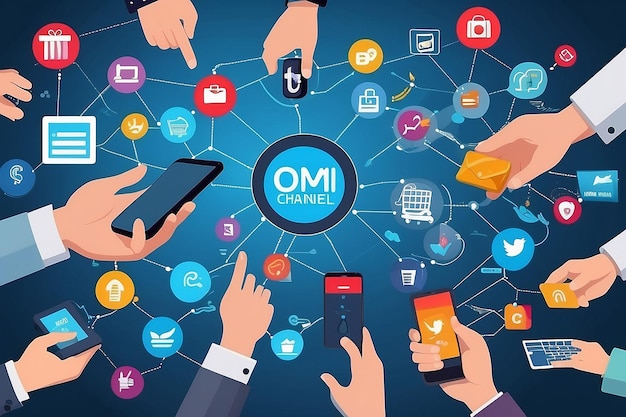Did you know 76% of brands consider omnichannel campaigns essential for long-term growth? Recent research from Customer.io highlights the transformative role of technologies like generative AI, connected TV, and enhanced personalization in enabling businesses to reach their customers wherever they are. Here are the top 5 omnichannel marketing trends to watch in 2025 to help you achieve your business goals.
1. Ethical Data Collection & Zero-Party Data
Marketers must prioritize ethically sourced data as privacy concerns grow and third-party cookies phase out. According to Cisco, 81% of consumers believe a company’s treatment of personal data reflects how much it values them, and 76% won’t purchase from brands they distrust.
Marketers increasingly turn to zero-party data—data voluntarily shared by customers through surveys, contests, or loyalty programs. This approach emphasizes consent and transparency, fostering trust while enabling businesses to deliver highly personalized experiences.
2. AI-Powered Dynamic Content
Dynamic content—personalized ads that adapt based on real-time data—has long been a cornerstone of omnichannel strategies. In 2025, AI integration will further advance this.
AI-driven insights enable marketers to achieve what Forrester describes as “intelligent creativity,” combining creative problem-solving with automation and data. This blend allows marketing teams to craft more engaging, deeply personalized messages tailored to audience preferences, driving better campaign performance.
3. Behavioral Targeting to Boost Engagement
Behavioral targeting uses consumer activity and preferences to create personalized, cohesive channel messaging. For instance, a fitness brand might recommend workout videos in their app, send customized email discounts, and equip in-store staff with insights into a customer’s purchase history.
This strategy analyzes consumer behavior to establish multiple touchpoints tailored to their habits. By aligning marketing efforts with customer preferences, behavioral targeting enhances engagement and increases the likelihood of conversions.
4. Unified Brand Experience
A seamless, consistent brand experience across channels is key to fostering customer loyalty. By integrating platforms and aligning messaging, businesses can deliver frustration-free interactions, which consumers increasingly expect.
The CMO Council reports that 87% of customers get frustrated repeating themselves across channels, and 73% question their loyalty to such brands. Furthermore, research from Optimove reveals that 83% of consumers who shop in-store research prices online, underscoring the need for a unified, omnichannel presence.
5. A Mobile-Forward Strategy
In 2024, mobile messaging through push notifications, in-app alerts, and SMS grew by 194%, and mobile interactions have become central to the customer journey. Consumers start by discovering brands through social media, receiving targeted emails, and making purchases via apps—all on the same device.
With 68% of people using mobile devices for email and the average American spending 4 hours and 30 minutes daily on their phone, mobile optimization is more critical than ever. A mobile-forward approach ensures businesses meet customers in real time, leveraging moments that drive purchasing decisions.
Conclusion
As we head into 2025, omnichannel marketing evolves rapidly with technology and consumer behavior. Trends like AI-enhanced dynamic content, behavioral targeting, ethical data practices, and unified brand experiences are setting the stage for personalized and effective campaigns. To stay competitive, businesses must prioritize mobile-first strategies and ethically collect data to build consumer trust. Delivering a seamless, consistent customer experience across all touchpoints will boost engagement and loyalty and fuel sustainable growth. In the ever-changing digital landscape, a robust omnichannel strategy is no longer optional—it’s a business imperative.




